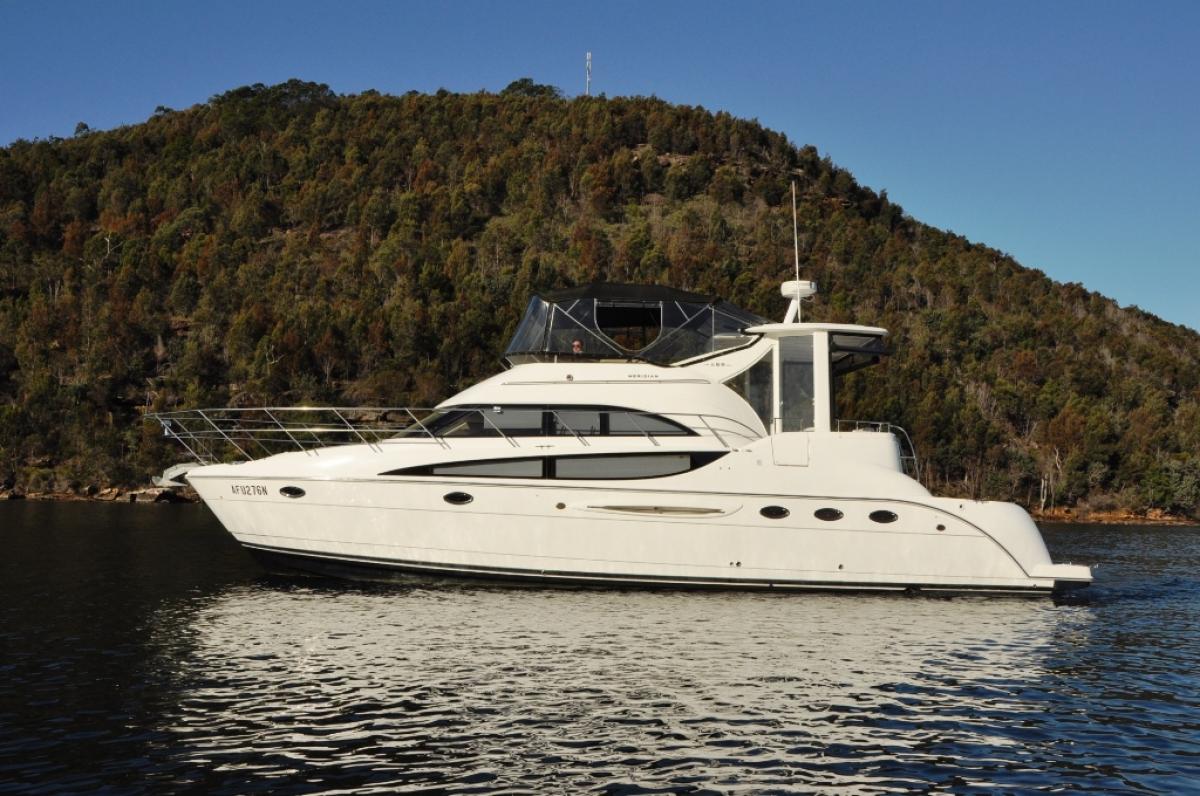I'd suggest your friend is a little optimistic with his Meridians fuel figures. We have a Meridian 459 with twin 370B Cummins. When we recently did a 600nm trip I kept a detailed fuel log. Most of the way we did 7 knots at 1200RPM. If you look at the torque curve for these engines that is 98hp and the Cummins fuel burn figure if correctly proped is 14lph. I found we got slightly better than that at 12lph and our overall fuel burn came in at 2.2 nautical miles per US gallon.
I think you will find that with modern engines running at a couple of knots below hull speed the difference between a full displacement a semi displacement and for that matter a planning hull will be small. Ask people who have actually had both like the folks who own Dirona and they will tell you the same thing.
We love our Meridian. Very economical with lots of room and comfort.
I dropped my friend an email to be sure I got the info correct, 2 nmpg seems more reasonable and that's just fine with me. Got me looking seriously at the Meridian.... lots of creature comforts.






 he you are Fleming 55 curves
he you are Fleming 55 curves